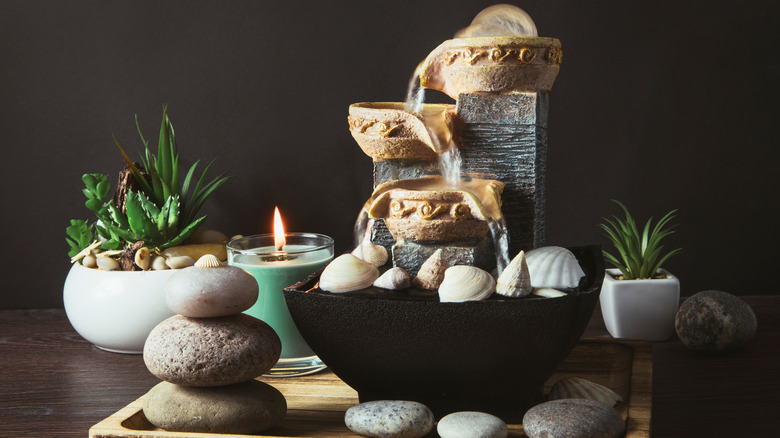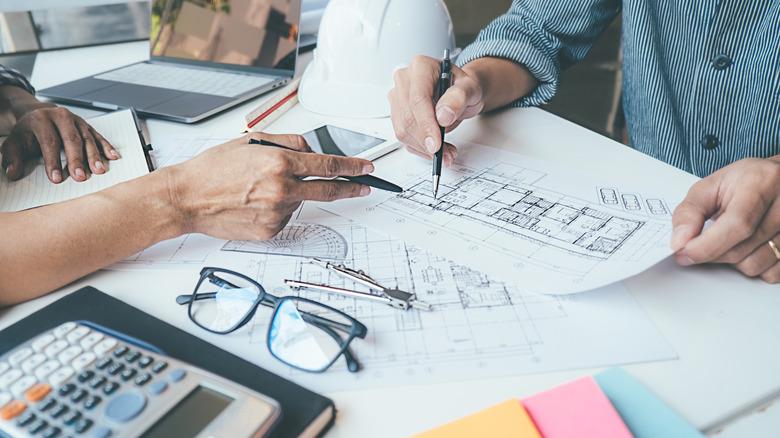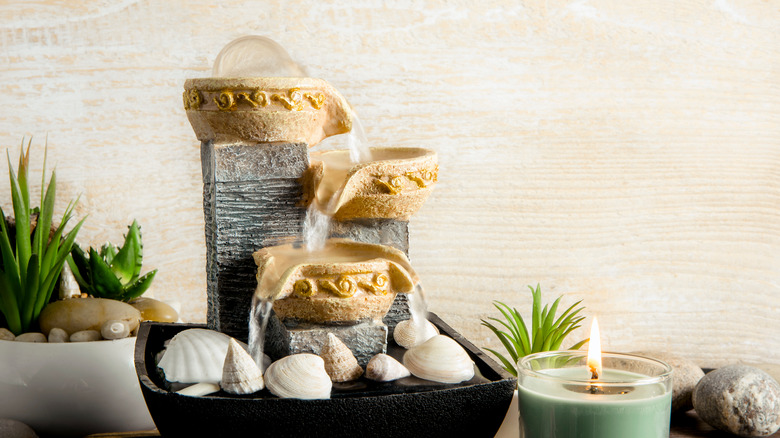The Bagua Map And How To Use It To Promote Your Home's Feng Shui
If you've ever ventured into the art of feng shui, odds are you've heard about the Bagua map. Feng shui itself is an ancient technique that involves arranging your home in a way that promotes the best flow of chi, or energy, as well as balancing the five elements — wood, fire, earth, metal, and water.
While there are general, overarching feng shui principles and recommendations for specific areas of the home — don't place a mirror in front of your bed, keep the bathroom door closed, don't keep broken items, etc. — the heart of the practice comes down not to the room itself, but where it's located in your house. Each area of your home is meant to represent a different area of life, and this is determined by the aforementioned Bagua map. Ba means eight in Chinese, and gua means area, and as such, the Bagua map refers to a chart composed of eight areas, each having a different meaning, different representative elements and colors, and purposes.
Two types of Bagua maps
While the Bagua map denotes eight areas of your home, there are actually a total of nine. In the middle of the map is the health and center section, which, as the name suggests, is meant to be at the center of your home. However, there are two ways to use the Bagua map depending on your space.
Traditionally, you would start in the very center of your home and use a compass to distinguish each section of the Bagua map. Start with north, which is the career and life path area of the map, and work your way around from there. Smaller spaces like apartments, as well as those not wanting such a strict reading of their home, could refer to the Black Hat Bagua method, which overlays the map in the same way for each home, lining the front door up with the bottom of the map.
Meaning of each area
While the approach to each map is different, the meanings are the same. Each area is represented by a different element, theme, and energy. In the traditional Bagua map, there are three yao symbols, represented either solely or by a mix of yin and yang. More yin means it's feminine, or receptive, in terms of energy, and yang is more masculine or creative. Each area can be enhanced not just by the element, but colors and objects.
The north is the career and life path area, represented by the water element. Anything to do with water will enhance this area — paintings of water, small fountains, etc. To the south is fame and reputation, represented by fire, therefore candles, fireplaces, and the colors of fire will enhance this area. Health and ancestors are to the east, represented by wood. This can be literal wood furniture, as well as wood-like imagery such as plants, thick stripes, and shades of green.
To the west are children and creativity, symbolized by the metal element. Don't go too brutalist, though — pastel colors and soft metals like gold are ideal here. Knowledge is in the northeast, a mix of water and earth, and helpful people and travels are in the northwest, represented by metal. Finally, wealth and prosperity are in the southeast, symbolized by wood, and love and marriage to the southwest, represented by both fire and earth.


